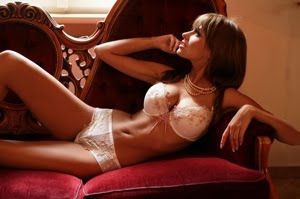- carving jack-o'-lanterns, decorating houses and other projects;
- trick-or-treating, also known as guising;
- pranking people;
- ghost tours, Dracula tours, haunted attractions;
- bonfires;
- playing halloween games;
- special recipes;
- reading scary stories,
- watching creepy movies;
- wearing costumes and costume parties.
Friday, October 2, 2009
Halloween costumes, history and links to the fascinating Halloween websites
by
BustNLace
at
11:49 PM
Halloween, our spooky annual national festivity is not patriotic, not historical, not associated with a particular religion, but enthusiastically celebrated. With its own set of highly recognizable symbols, rituals and stories Halloween weaves spirituality, death and religious beliefs into our present and historical imaginations.
Halloween has its roots in Celtic festival of Samhain "summer's end", the Christian holy day of All Saints’ Day and Catholic All Souls’ Day.
Samhain festival held at the end of the harvest season in Gaelic and Brythonic cultures has aspects of a festival of the dead.
All Saints’ Day, also called All Hallows or Hallowmas often shortened to All Saints, is a solemnity celebrated on November 1 in Western Christianity, and on the first Sunday after Pentecost ("the fiftieth day" in Ancient Greek - Pentecost is celebrated 7 weeks (49 days) after Easter Sunday) in Eastern Christianity in honor of all the saints, known and unknown.
All Souls’ Day commemorates the faithful departed. This day also known as the Feast of All Souls, Commemoration of all the Faithful Departed and Day of the Dead, is principally observed in the Catholic Church.
All Hallows’ Eve is also known as All Saints’ Day.
Halloween however is not celebrated in all countries and regions of the world, not at the same way, anyway. Yet observance in the United States has a significant influence on other nations’ celebrations.
Halloween, originally spelled Hallowe'en is celebrated on October 31.
Main colors: orange and black
Halloween activities:
The ancient Celts believed that on October 31st (Halloween) the boundary between the living and the deceased dissolved and the dead become dangerous for the living by causing problems such as sickness or damaged crops.
The festivals would frequently involve bonfires, into which the bones of slaughtered livestock were thrown.
Costumes and masks being worn at Halloween goes back to the Celtic traditions of attempting to copy the evil spirits or placate them, in Scotland for instance where the dead were impersonated by young men with masked, veiled or blackened faces, dressed in white.
Symbols
Believing that the head was the most powerful part of the body, containing the spirit and the knowledge, the Celts used the "head" of the vegetable to frighten off the embodiment of superstitions.
The name jack-o'-lantern can be traced back to the Irish legend of Stingy Jack, a greedy, gambling, hard-drinking and lazy yet shrewd old farmer. He tricked the devil a couple of times by using a cross to trap him. Stingy Jack made the Devil promise him not to take his soul when he died. When Jack finally died, he was rejected by Saint Peter to enter the gates of Heaven due to his cruelty and worthless life on earth. The Devil kept his promise and did not allow him to enter the Hell. Scared Jack had nowhere to go and was condemned to forever wander the earth in the darkness between heaven and hell. The only light he had once a year a candle inside of a hollowed turnip.
The carving of pumpkins is associated with Halloween in North America where pumpkins are both readily available and much larger - making them easier to carve than turnips.
What is Halloween without a Black Cat?
There is a Celtic belief that cats' eyes are windows through which human beings may explore an inner world.
This animal has power deeply to enrich our lives if, instead of obsessively loving or hating the cat, humans adopt a realistic attitude toward its paradoxical nature, and allow it to communicate its wisdom.
Trick-Or-Treating
Trick-or-treating, known also as guising is customary celebration for children on Halloween in which they proceed from house to house in costumes asking for treats such as candy or other healthy treats, with the question, "Trick or treat?", or the phrase "Happy Halloween! The word "trick" refers to a threat to perform mischief on the homeowners or their property if no treat is given.
In some parts of Scotland children still go guising. In this custom the child performs some sort of show, i.e. sings a song or tells a ghost story, in order to earn their treats.
Costumes
Halloween costumes are traditionally those of monsters such as ghosts, skeletons, vampires, witches, and devils. Costumes are also based on themes other than traditional horror, such as those of characters from TV shows, movies, and other productions.
Choose the costume you like from costume ideas at http://www.bustnlace.com/costume-playhouse-c-101.html or create your own by using vinyl or leather products from our collection.
We welcome pictures from your Halloween. Please send us your Halloween photos you would like to share.
Below selected photos from Halloween costume playhouse.
Subscribe to:
Post Comments (Atom)































No comments:
Post a Comment